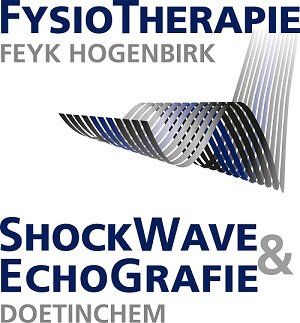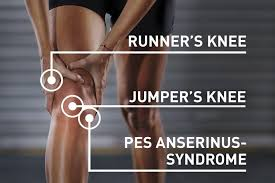Jumpers / Runners Knee
Jumpers / Runners Knee
What is runner's knee?
Runner's knee is a form of overuse injury that causes irritation on the outside of the knee. Between the hip and the outside of the knee, two muscles run into a tendon plate that runs along the upper leg to the knee and attaches to the outside of the lower leg with a tendon. Just before it attaches to the outside of the lower leg, the tendon can 'bump' against a protruding point on the outside of the knee. If this continues for a longer period of time, irritation may occur at that point, causing pain. Because this injury often occurs in runners, the name runner's knee was created. However, this gives a distorted picture, because there are many other sports and causes that can cause this injury. Other names for this are iliotibial band friction syndrome or iliotibial friction syndrome.
Causes of runner's knee
There are several causes that can lead to runner's knee. First of all, people with so-called bow legs are more likely to develop these complaints, because the tendon has to go around a kind of bend. This means there is more tension on the tendon, which increases the risk of friction at the irritation point on the outside of the knee. Shortened muscles on the outside of the thigh can also cause more friction due to an increase in tension in that area. Weakness of the gluteal muscles and thigh muscles on the outside of the knee can result in less control during the landing phase of running, causing the knee to tend to turn inward more. This also increases the tension in this area. Iliotibial band friction syndrome can also be caused by a difference in leg length or by a deviation in the position of the foot. In addition, worn or poor footwear is also one of the possible causes.
Signs & symptoms of runner's knee
With runner's knee, knee complaints mainly occur during running and/or climbing stairs, pain on the outside of the knee. These pain complaints can extend to the top of the lower leg. The pain usually consists of a dull to sharp, stabbing pain. The complaints often arise while running and progressively increase. In the beginning, you can usually continue running for a relatively long time, but the pain complaints will occur earlier and earlier. The pain can also occur after running or even the next day and people also experience discomfort when climbing stairs, for example.
Iliotibial band friction syndrome can be divided into three stages:
Stage I: the pain is felt after exercise
Stage II: the pain already occurs during exercise
Stage III: the pain is constant, making training no longer possible.
How is runner's knee diagnosed?
An interview may reveal the complaints of runner's knee. In addition, the diagnosis can be established with additional physical examination. The pain is often easy to identify and there are specific tests that can provoke the complaints. Ultrasound may possibly confirm the diagnosis, but this is often not necessary due to the clear image.
What is the prognosis?
With adequate treatment, the prognosis of a runner's knee is favorable and it can recover completely. The earlier one is diagnosed, the better the prognosis. In addition, the cause must also be examined to prevent a recurrence.
Treatment of runner's knee
The treatment of iliotibial band friction syndrome depends very much on the stage at which it is present. In the acute phase it is important that sufficient rest is taken so that the affected tendon can recover. Ice cooling is often also used when an inflammation is present. Once this inflammation phase is over, some form of rest should still be maintained, but this does not mean that nothing should be done at all. Exercising within the pain threshold is allowed, but running is not recommended in the beginning. In addition, exercise therapy and some massage/frictions in the tendon area are often included.
Overload can also cause so-called trigger points in the muscles, which can, among other things, cause extra tension in the tendon area. As a result, part of the treatment can also include trigger point therapy and/or dry needling therapy. The treatment of this injury can, as you will notice, be very broad and this will also be necessary to prevent recurring complaints. Often it is not enough to eliminate the symptoms and promote the recovery of the tendon and surrounding muscles alone. The cause of this complaint will need to be further investigated. As a result, the treatment can differ greatly per person and per phase. It is important to contact a physiotherapist to start a good treatment process.
What are other treatment options?
- Massage/frictionsMedical tapingTrigger point therapyDry needlingInformation and adviceActive exercise therapyShockwave therapy Stretching exercises
ADDRESS
Physiotherapy Feyk Hogenbirk
Gezellenlaan 21
7005 AX Doetinchem
(Free parking)
T 0314 394 222
M 0653669587
info@fysiotherapiedoetinchem.com
OPENING HOURS
- Monday
- -
- Tuesday
- -
- Wednesday
- -
- Thursday
- -
- Friday
- -
- Saturday
- Appointment only
- Sunday
- Appointment only
All rights reserved | Disclaimer | Privacy | Website by Internet agency Doetinchem FrankBrinks.nl





